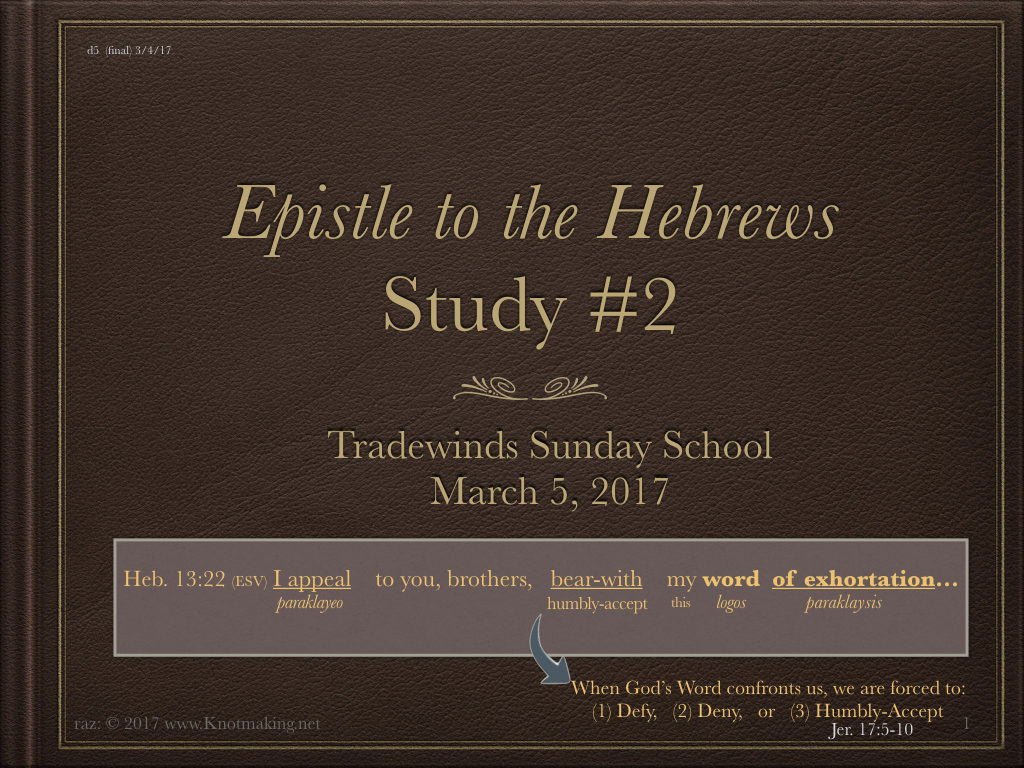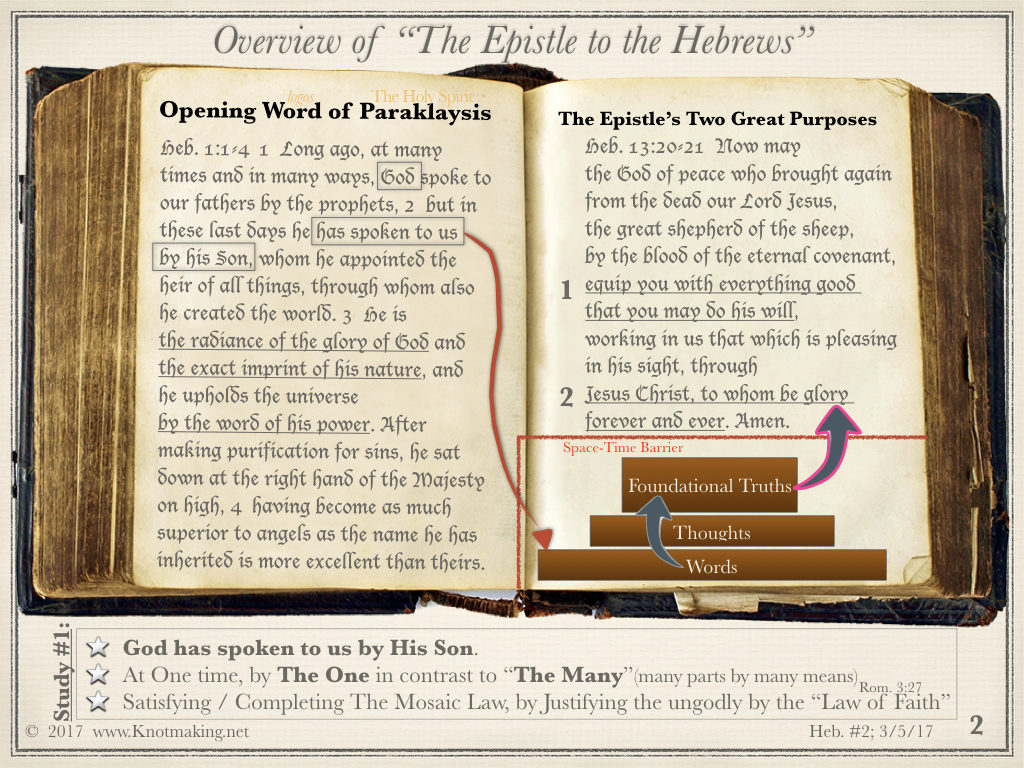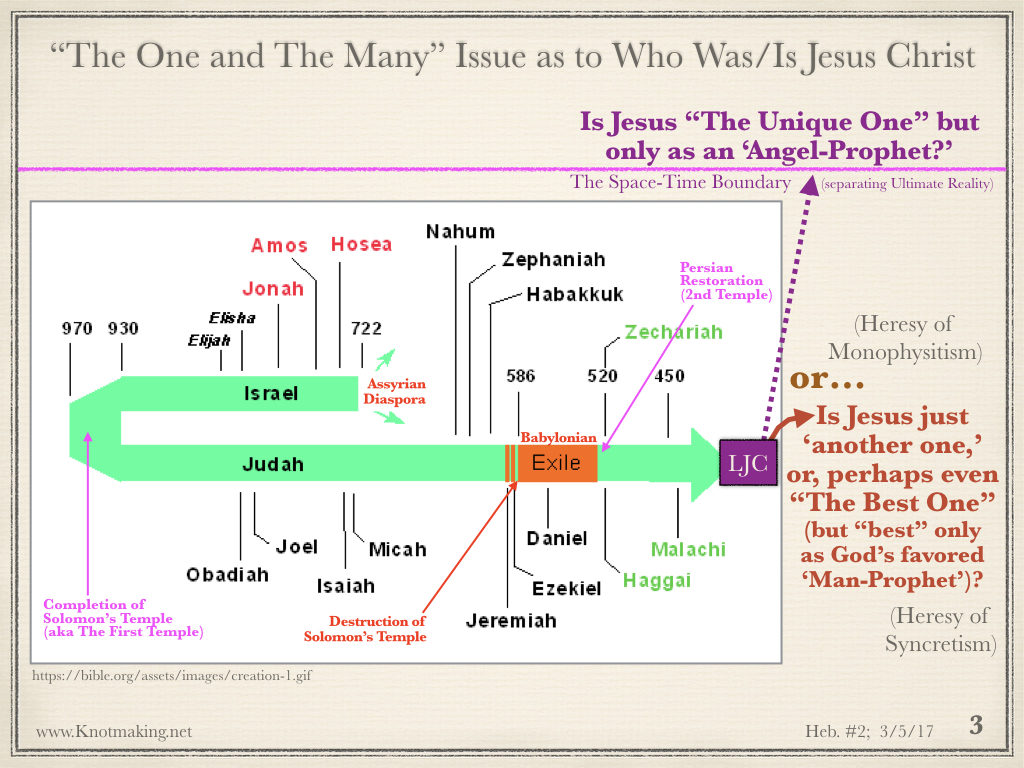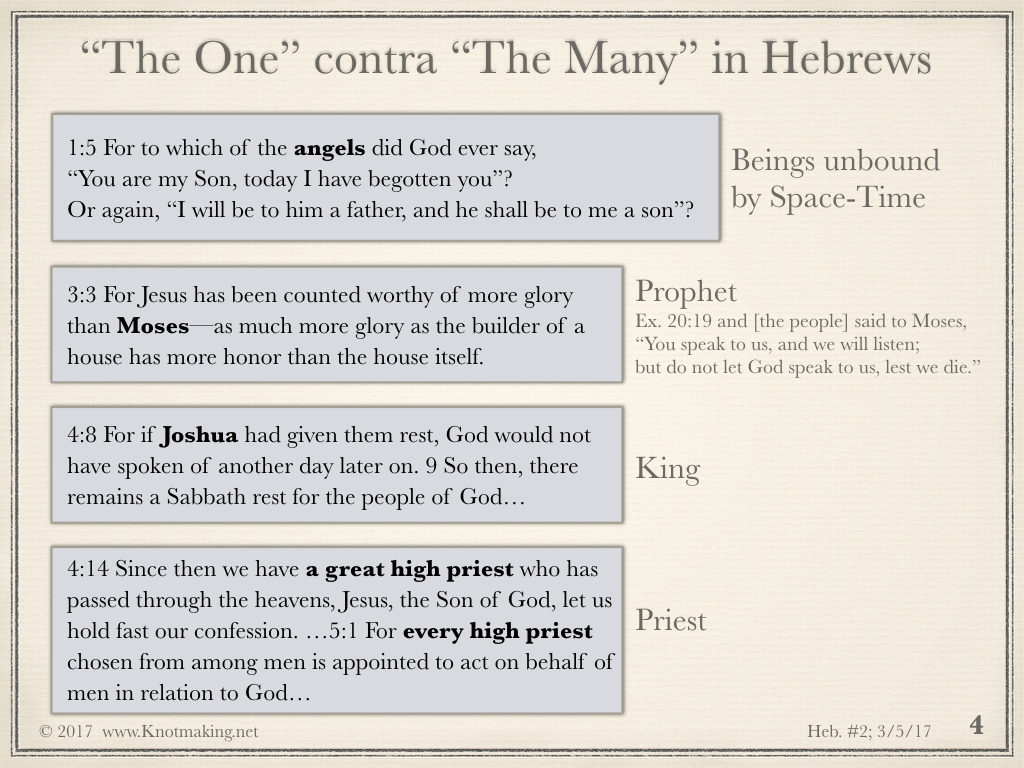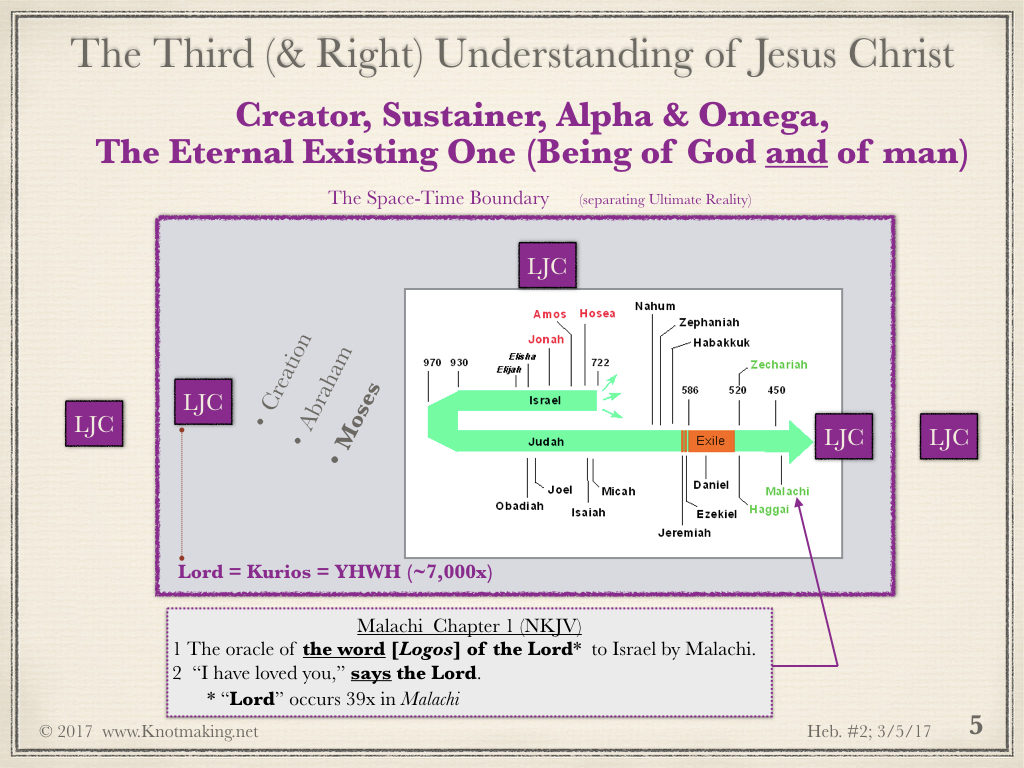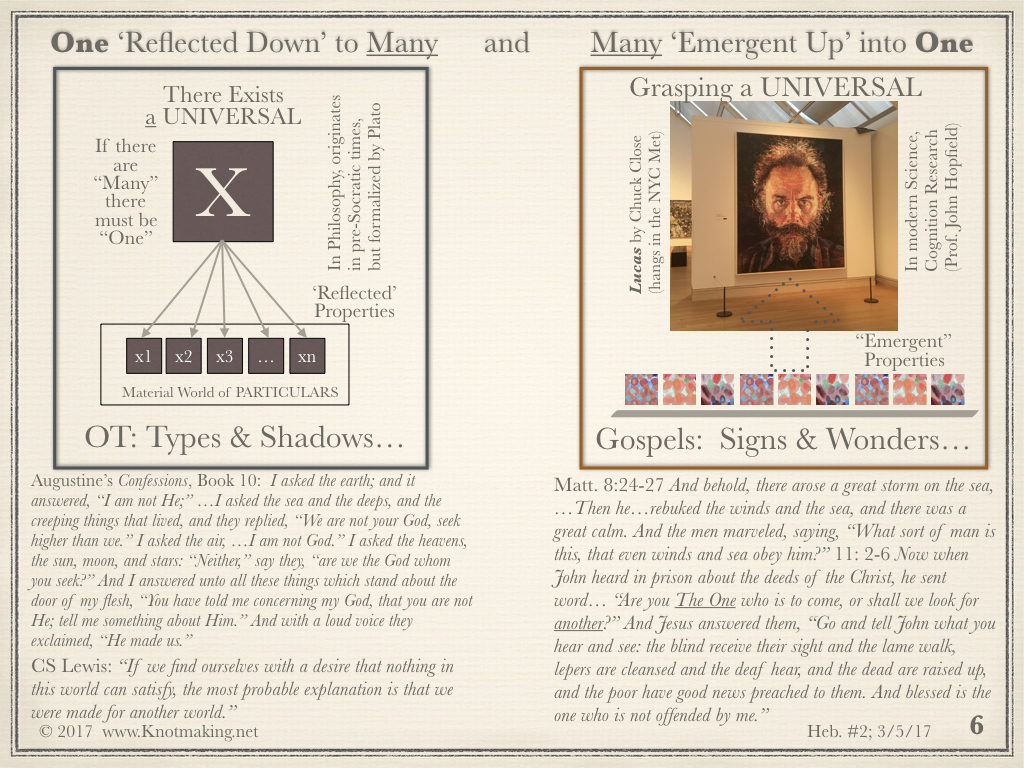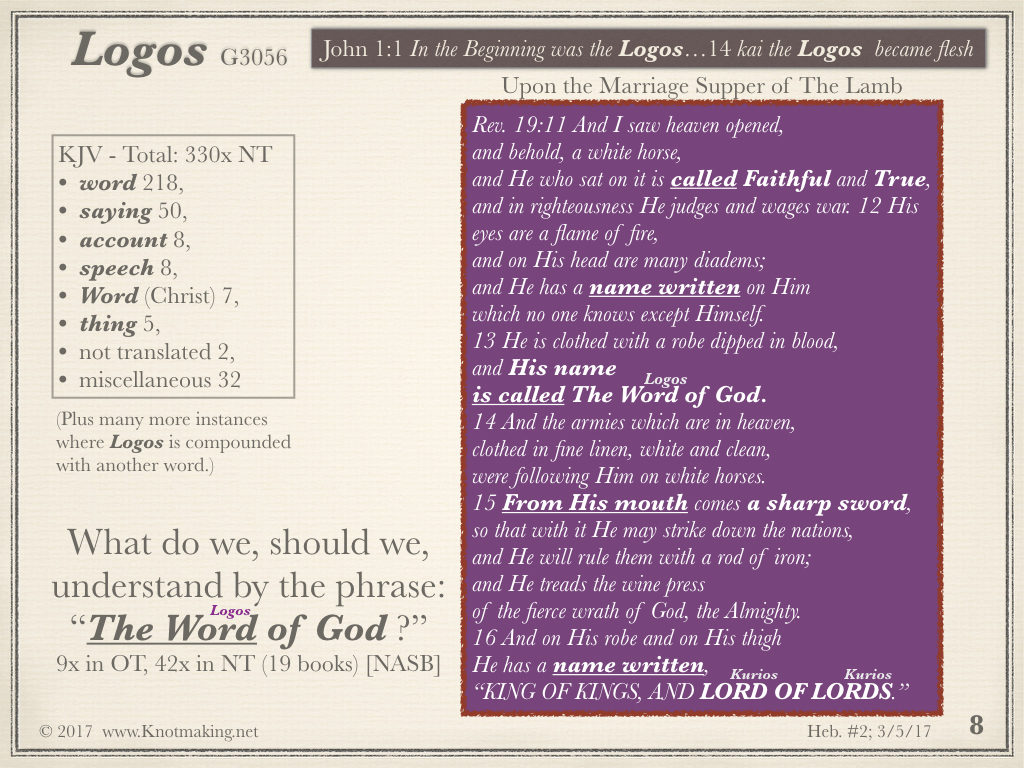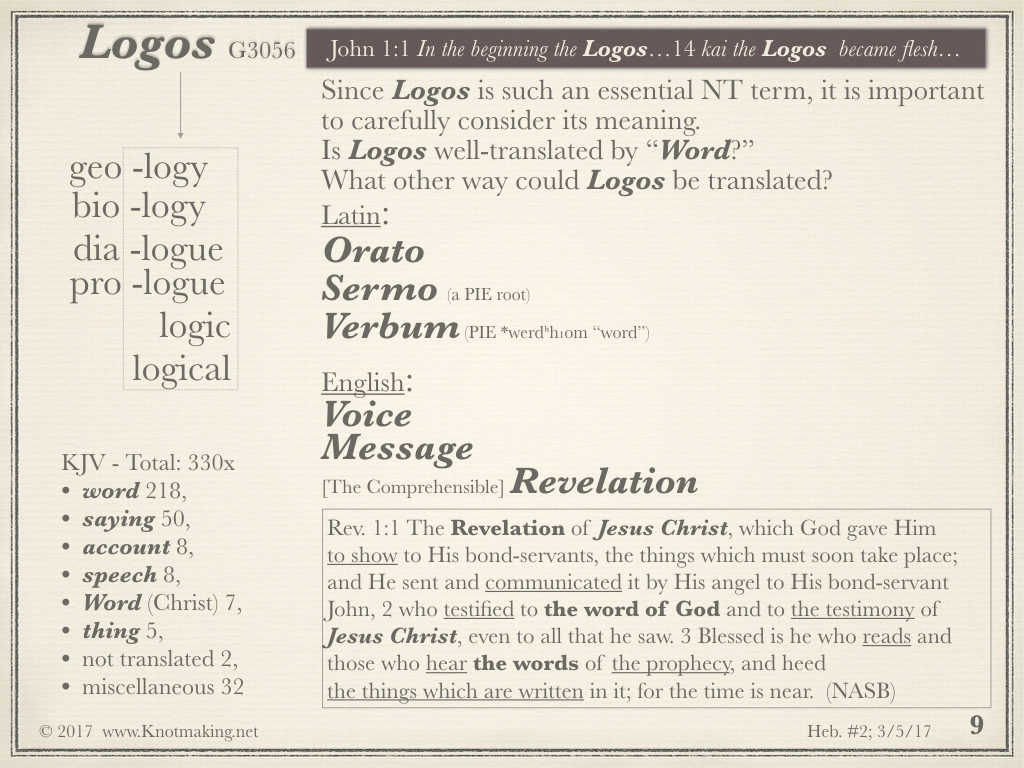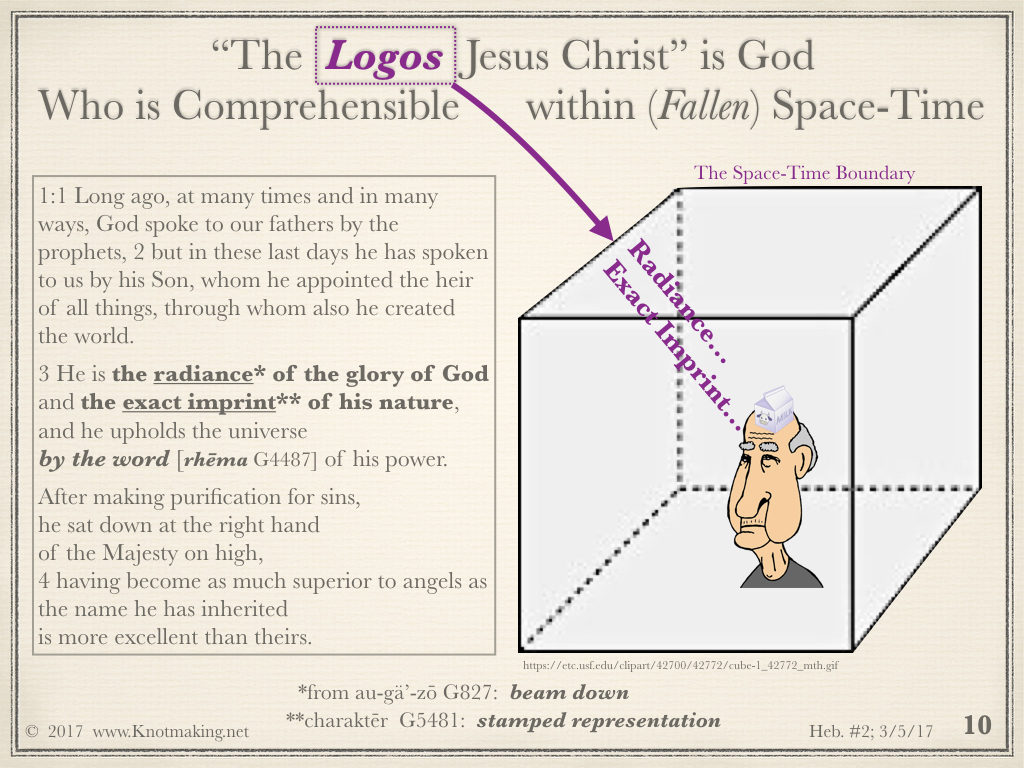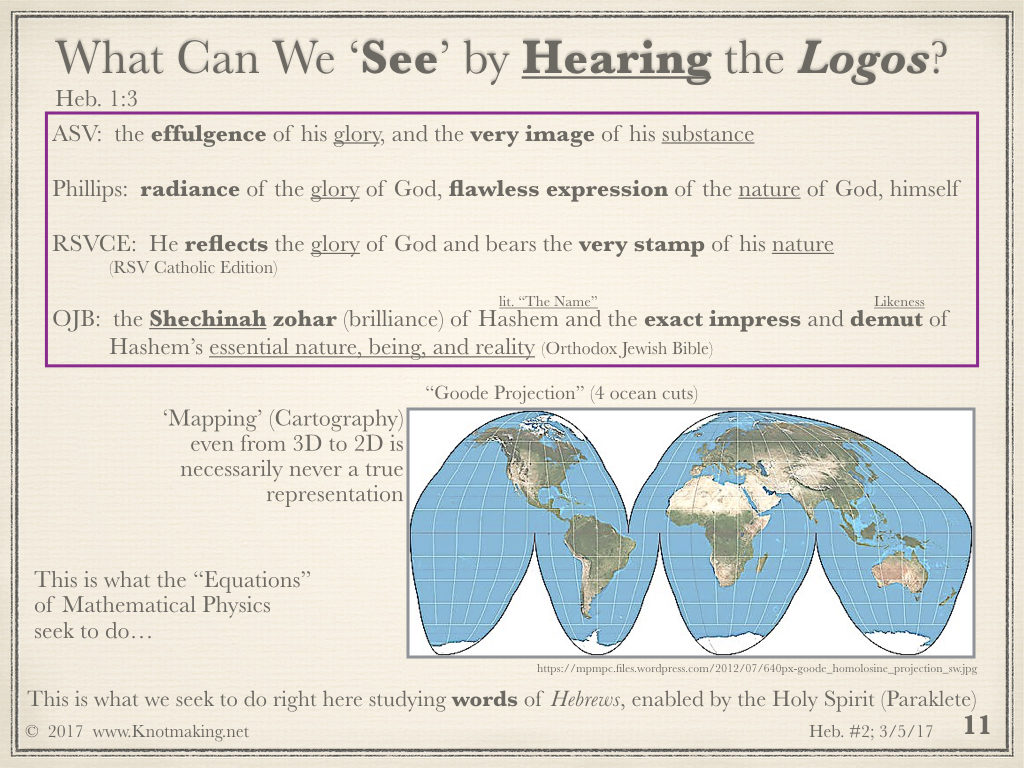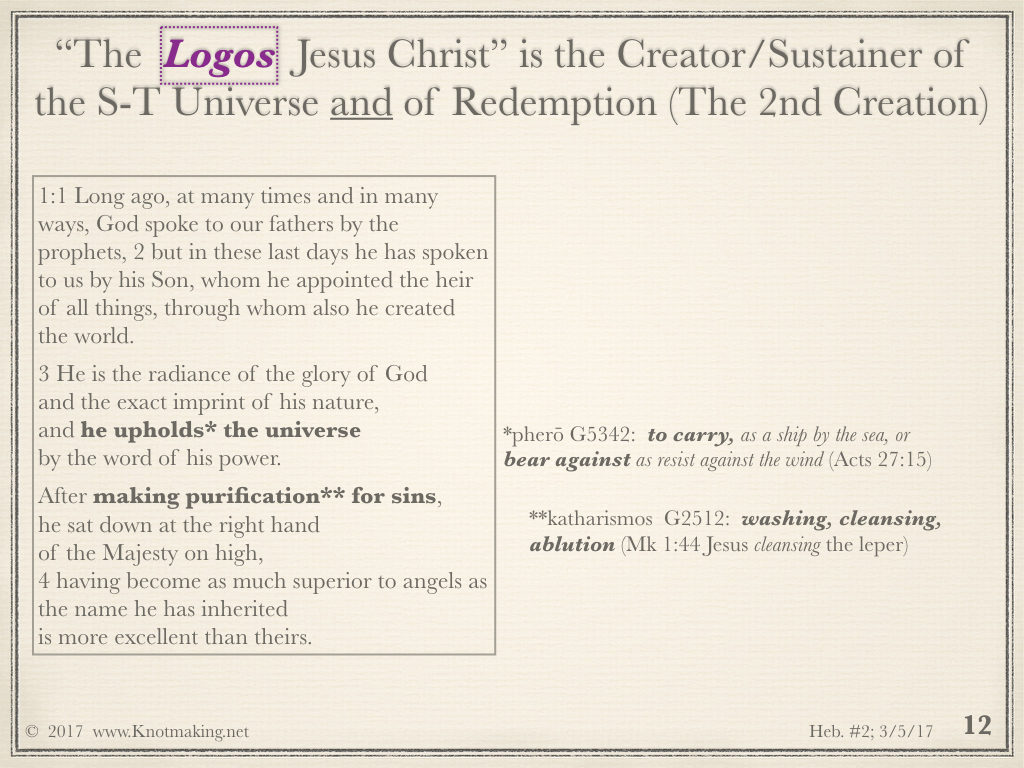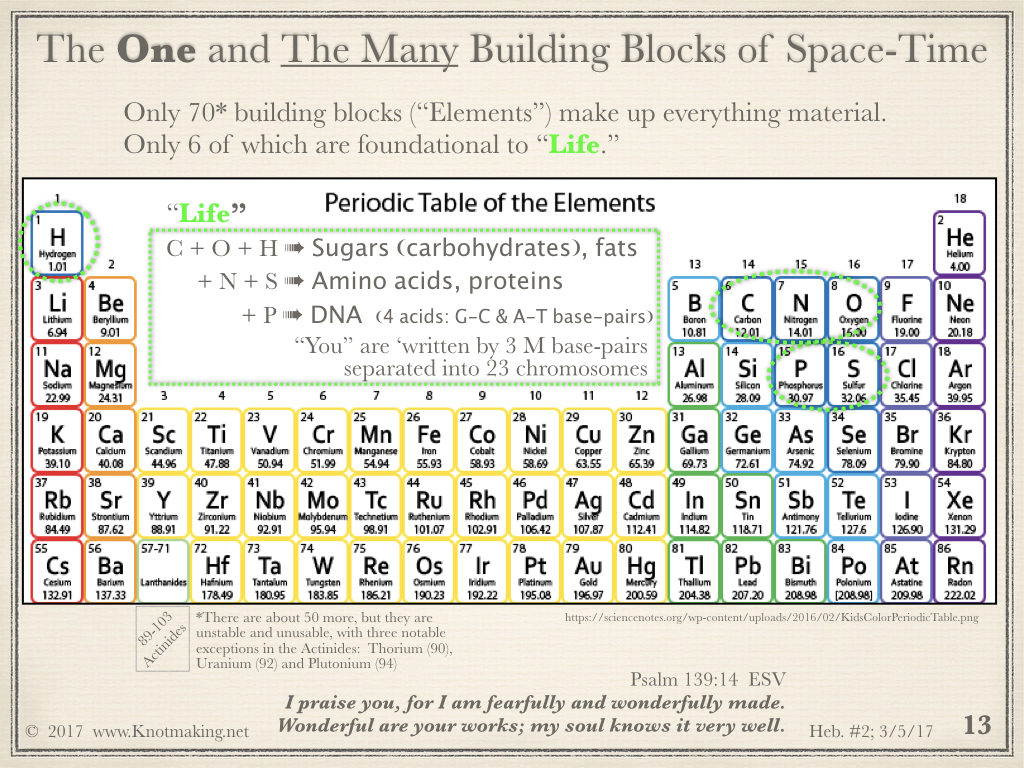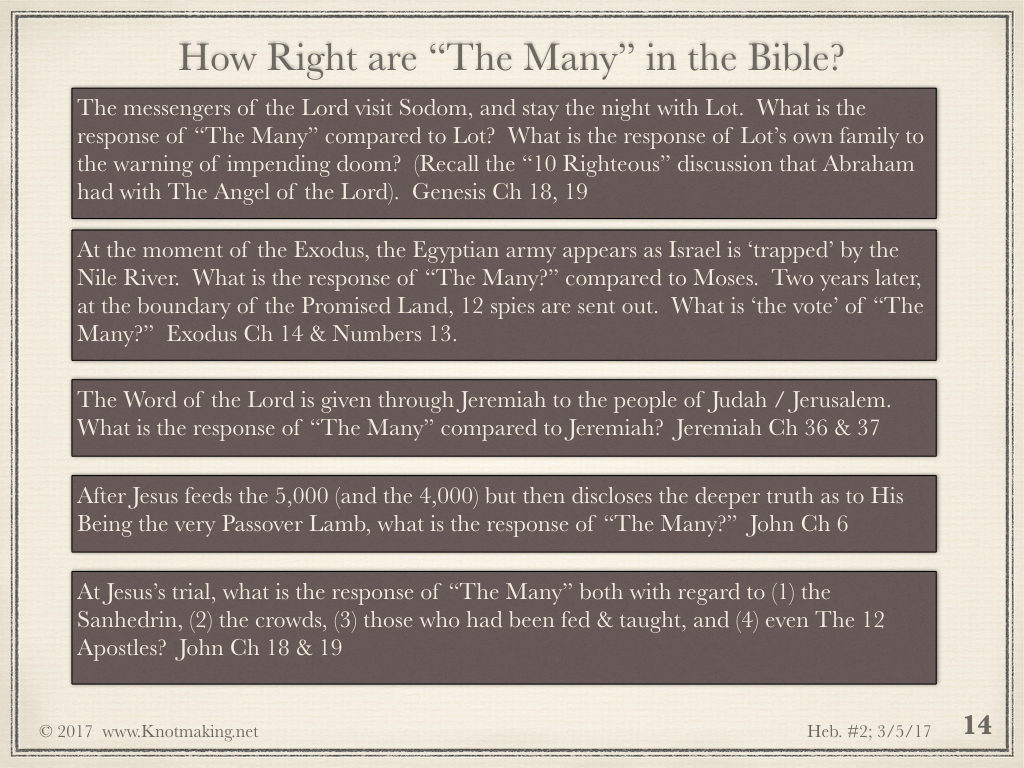Focus on Hebrews 1:2-3
The charts for Hebrews Study #2 are given below:
A summary of the key foundational points we covered in Study #1 are given at the bottom of the below chart:
Regarding the reference to “Words” in the above chart, and the Greek word Logos, in the charts to follow, we might ask, why are they (words) important? Of course the answer is that God used words in direct revelation to us locked here in Space-Time. Romans 1 tells us that God also spoke to us in Nature, but such “speech” can inform us of His power and glory and love at a high level. We need God’s written Word to grasp a much fuller extent of His Person and Work, which is what theologians call God’s “special revelation,” namely the Bible itself.
Regarding the above chart, there are two broad kinds of heresies (foundational errors) that arises from asking the shown “either / or” question. One heresy is affirming that there it must be “either / or” meaning that Jesus Christ had to be of one Being only, and it was either God in some form of appearance as man, or he was of the being of man only (however wonderful with godlike qualities).
A second category of heresies arises from the later choice of the “either / or” question, namely that Jesus was just the Being of man. This category of heresies leads to various forms of syncretism whereby later men reveal further ‘truths’ which must be joined in some way with the incomplete truth revealed in Jesus, and so forth.
The Bible clearly rejects both these errors, as will be discussed in later studies. For now, let us affirm that Jesus had two natures (Beings), fully God and fully man. This may never be fully comprehensible to us, but that is the clear claim of Scripture. So as a consequence He (Jesus) is the completeness of God’s revelation, and there is no syncretism possible joining somehow the teachings of some subsequent ‘prophet’ (man) to extend–with the authority of God behind such extension–the revelation of Jesus.
The below chart emphasizes that the Lord Jesus Christ (LJC) came into Space-Time per John 1 but was the Creator of the universe and the One who encountered Abraham, Moses, and spoke through the various prophets of the Old Testament (OT).
The idea of “The One” (or A Universal) contrasted with “The Many” (or The Particulars) has a long history outside of Biblical contexts because the concept is part of God’s creation itself. The traditional philosophical view is that the many, i.e. the particulars, reflect in some way the existence of a permanent, perfect form, namely a universal. The secular discussion goes back in time to the pre-Socratic period (pre 400 B.C.) to men like Parmenides and Zeno, and many others, made most widely known by Plato and his cave metaphor.
More recently in the area of brain and cognition research there is a ‘bottom’s up’ examination of “emergent properties.”
Both the reflected down and emergent up are secular studies, but the Bible was there first. In the Old Testament, the idea of types and shadows are reflections of the then coming of the the Lord Jesus Christ. In the Gospels period, we have the New Testament context of an emergent realization that this Being (Jesus Christ) was in fact the promised Messiah. Neither of these mappings from the Universal to the Particular is capable of realization but for the work of the Holy Spirit making alive such truth in us.
Some additional images of “Lucas” (that I have taken) are posted below showing how the artist (Chuck Close) used pixels with our mind’s ability to construct “emergent properties” to create the discernible picture os his close artist friend, a man named Lucas.
(Just to be sure there is no confusion, neither the artist Chuck Close, nor me by its inclusion here, is using the below image of Lucas to portray Jesus Christ. This is NOT an artist’s impression of the human Jesus).
Below is a video clip taken from very close to the picture moving back to capture when “Lucas” appears:
The reference in Heb. 1:2 to God speaking (literally: “he has spoken”) is significant because the underlying idea links back to the creation itself and is a thread through the entire Old Testament: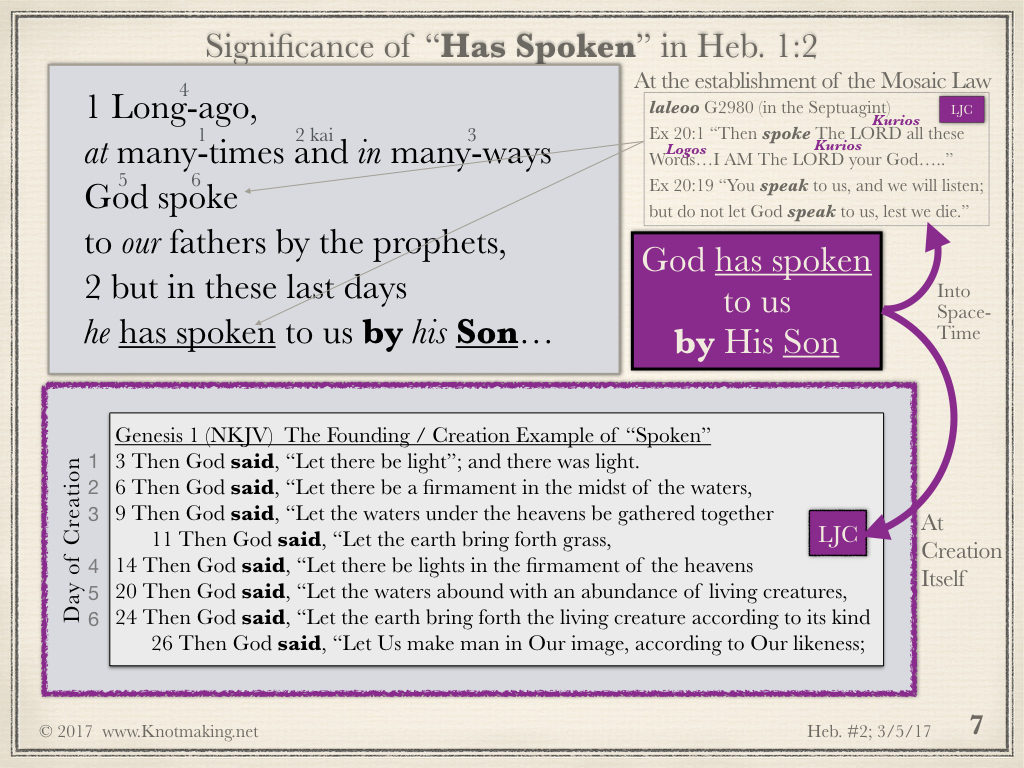
Hebrews Study #3 is here:
